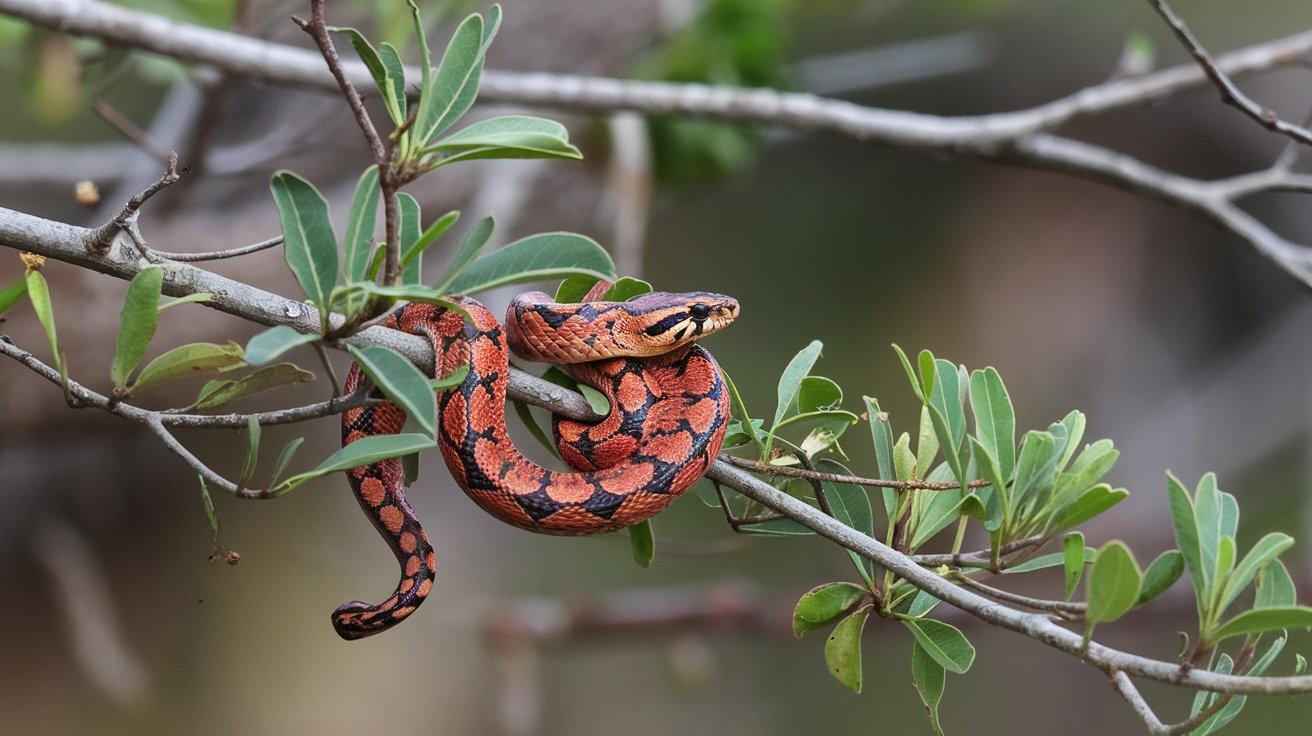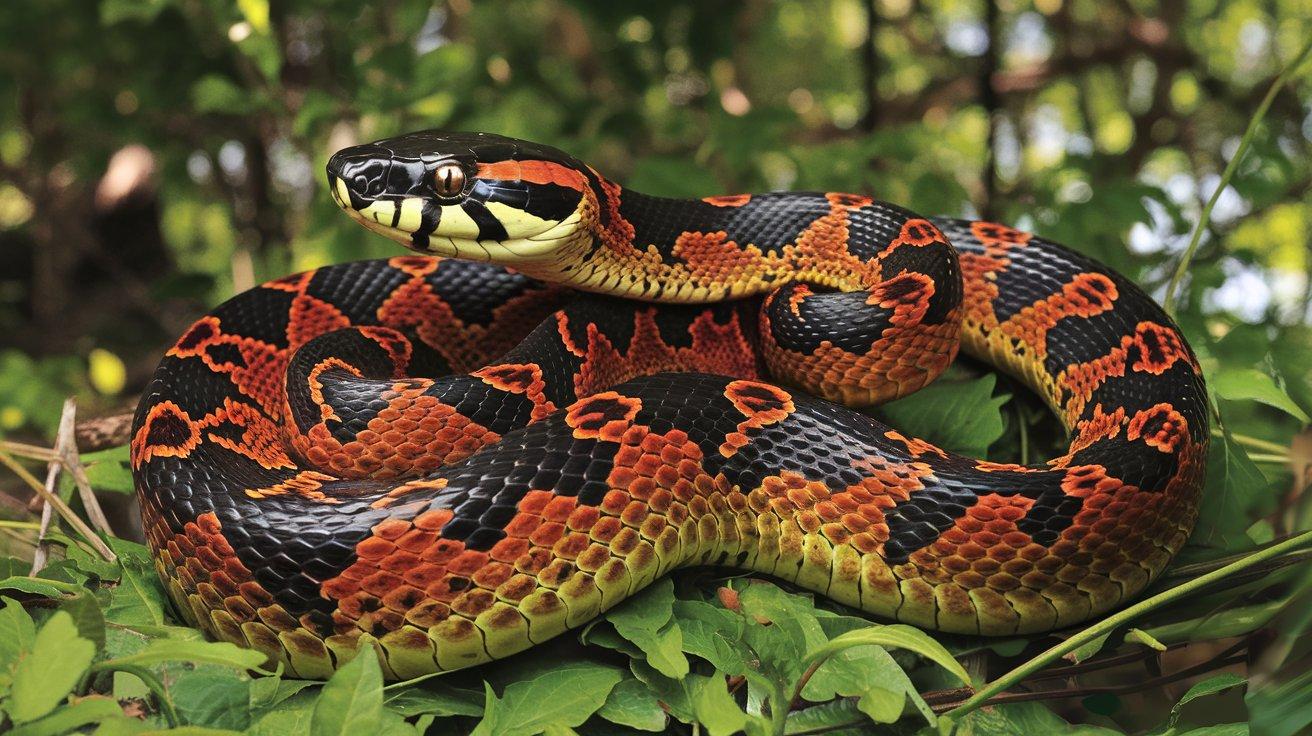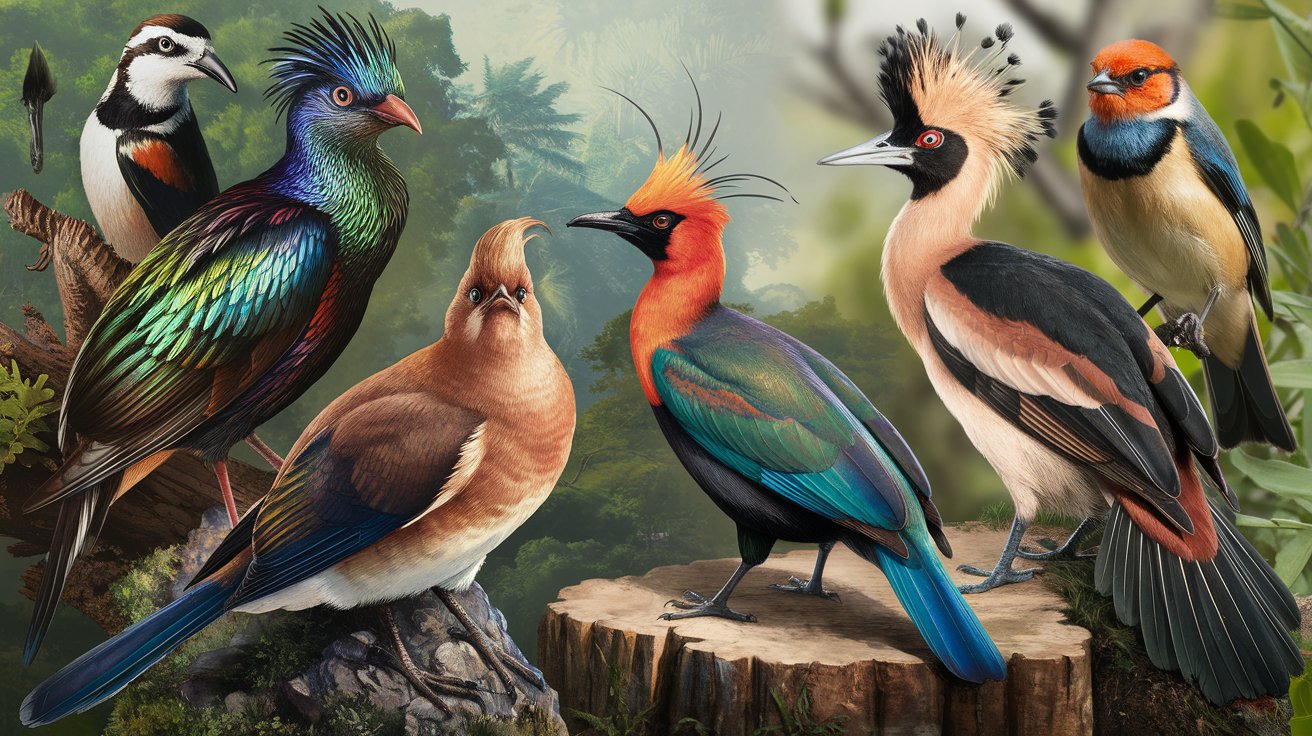The Ruby Snake is a stunning, slender serpent known for its vibrant red hue and iridescent scales. It belongs to the Colubridae family, a diverse group of non-venomous snakes. Native to tropical and subtropical regions, the Ruby Snake captivates herpetologists and enthusiasts alike with its rare appearance and fascinating behaviors.
This article will delve into the habitat, physical characteristics, behavior, and conservation of this unique species.
Habitat and Distribution
Ruby Snakes thrive in diverse environments, ranging from rainforests to grasslands. They prefer humid climates, often found near water sources such as streams and ponds. The geographical range of these snakes primarily includes Southeast Asia, with populations reported in parts of India and Indonesia.
Physical Characteristics
Ruby Snakes are medium-sized serpents, typically growing between 3 to 5 feet in length. Their most distinctive feature is their radiant, ruby-red scales, which shimmer under direct light. This coloration serves dual purposes: camouflage in dense underbrush and a warning signal to potential predators. The ventral scales are often lighter, with hues of pink or beige, providing contrast to their vibrant dorsal side.
Their streamlined body structure, coupled with smooth scales, enables them to move swiftly through various terrains. The head is slightly wider than the neck, with large, round eyes that enhance their night vision, a critical adaptation for nocturnal hunting.
Behavior and Temperament
Ruby Snakes are primarily nocturnal, preferring to hunt and explore during the night. Despite their vivid appearance, they are relatively shy creatures, often retreating when faced with larger animals or humans. Their non-aggressive nature makes them less intimidating compared to other snake species.
They exhibit ambush hunting behavior, lying in wait for unsuspecting prey. When threatened, Ruby Snakes may flatten their bodies and hiss loudly, creating an illusion of a larger, more formidable predator.
Diet of a Ruby Snake
These snakes are carnivorous, feeding primarily on small rodents, birds, amphibians, and occasionally reptiles. Their diet plays a pivotal role in controlling pest populations, especially in agricultural regions.
Using their keen sense of smell and heat-sensitive pits, they locate prey even in complete darkness. Once a target is identified, Ruby Snakes employ constriction to immobilize it, a method that ensures efficient consumption.
Reproduction and Life Cycle
Ruby Snakes are oviparous, meaning they lay eggs rather than giving live birth. Mating typically occurs in the spring, with females laying clutches of 10-20 eggs in moist, secluded locations. The incubation period lasts 6 to 8 weeks, during which temperature and humidity levels significantly impact hatchling survival rates.
Juvenile Ruby Snakes resemble adults in coloration but are more subdued, developing their signature brilliance as they mature. The average lifespan in the wild is 10-15 years, although individuals in captivity often live longer due to controlled conditions and lack of predators.
Conservation Status
The Ruby Snake is not currently listed as endangered, but habitat destruction poses a significant threat to its population. Urbanization and deforestation in their native regions have led to fragmented habitats, reducing their chances of survival.
Conservation efforts focus on preserving natural habitats and creating awareness about the ecological role of Ruby Snakes. Several organizations collaborate with local governments to implement protective measures, such as establishing wildlife reserves.
Ruby Snake vs. Other Snakes
Ruby Snakes can be easily distinguished from other species by their striking coloration and mild temperament. Unlike venomous snakes, they rely on constriction rather than venom to subdue prey. They are also less aggressive and more tolerant of human interaction, making them suitable for educational exhibits and controlled environments.
Role in Ecosystem
Ruby Snakes are vital to their ecosystems. By preying on rodents and other small animals, they help maintain a balanced food web. Their presence also indirectly benefits farmers by controlling pests that can damage crops. Additionally, they serve as prey for larger predators, contributing to the intricate dynamics of their environment.
Care as Pets
Ruby Snakes are becoming increasingly popular as exotic pets due to their manageable size and docile nature. However, they require specific care to thrive in captivity:
- Housing: A well-ventilated terrarium with a secure lid, ample hiding spots, and a regulated temperature (75–85°F) is ideal.
- Diet: A diet of appropriately-sized rodents is recommended, offered every 7–10 days.
- Handling: Regular but gentle handling helps acclimate the snake to human interaction, reducing stress and promoting trust.
Mythology and Cultural Significance
In various cultures, snakes symbolize transformation and renewal. The Ruby Snake, with its fiery coloration, is often associated with passion and vitality. In some Southeast Asian folklore, these snakes are believed to bring good fortune, making them revered creatures in local traditions.
Health and Diseases
Like all reptiles, Ruby Snakes are susceptible to certain health issues, including:
- Respiratory Infections: Often caused by improper humidity or cold environments.
- Mites: These external parasites can lead to stress and illness.
- Shedding Problems: Insufficient humidity may cause incomplete shedding.
Regular health check-ups and a well-maintained habitat are essential for their well-being.
Training and Interaction
While snakes cannot be “trained” traditionally, Ruby Snakes can become accustomed to human interaction. Gradual and consistent handling sessions reduce their natural apprehension. Always approach them calmly and avoid sudden movements to foster a positive relationship.
Ethical Considerations
Owning a Ruby Snake comes with ethical responsibilities. Potential owners should ensure the snake was bred in captivity and not taken from the wild, as this contributes to population decline. Additionally, providing an enriching environment that mimics their natural habitat is crucial for their mental and physical health.

Interesting Facts about Ruby Snakes
- Ruby Snakes are excellent swimmers, often found near water bodies.
- They possess a Jacobson’s organ, enabling them to “taste” the air for scent detection.
- Despite their vivid appearance, their natural camouflage helps them avoid predators.
Frequently Asked Questions (FAQs)
- How do Ruby Snakes differ from other snake species?
Ruby Snakes are known for their unique ruby-red coloration and docile nature, setting them apart from more aggressive or venomous species. - Are Ruby Snakes dangerous?
No, they are non-venomous and pose no significant threat to humans. - Where can I find a Ruby Snake in the wild?
They are primarily found in Southeast Asia, often near forests or water sources. - What do Ruby Snakes eat?
Their diet includes small rodents, birds, and amphibians. - Can Ruby Snakes be trained?
While they cannot be trained like mammals, they can adapt to handling and interaction over time. - How can I protect Ruby Snakes in the wild?
Supporting conservation efforts and avoiding habitat destruction are key to their protection.
Conclusion
The Ruby Snake is a fascinating and beautiful species that plays an integral role in its ecosystem. Whether admired in the wild or cared for as a pet, these snakes captivate with their vibrant appearance and gentle nature. By understanding their needs and protecting their habitats, we can ensure their survival for generations to come.





